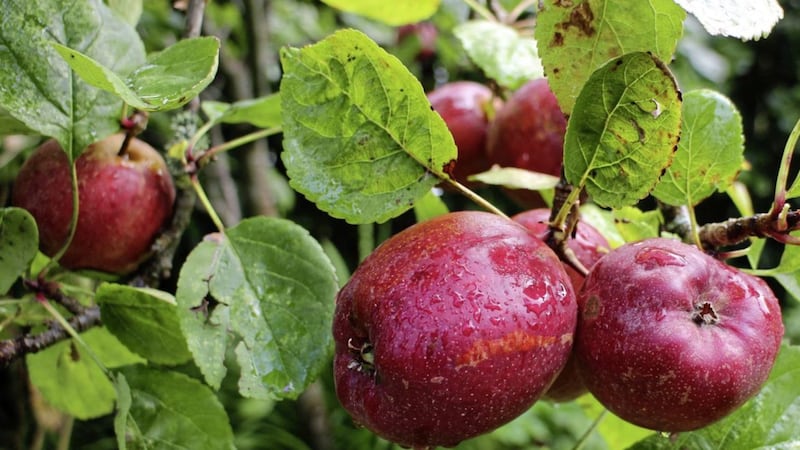IRELAND’S association with growing apples is thought to date back at least three millennia. According to legend, St Patrick planted a number of apple trees across the island, including one at Ceangoba, an ancient settlement close to where Armagh is today. Our temperate climate with cold winters, moderate summer temperatures, and medium to high humidity offers optimum conditions for apple growing.
In the northern half of the island, Armagh’s south facing drumlin slopes are particularly suited to the cultivation of the Bramley variety and likewise in counties Louth and Meath. Go further south and apples for eating and cider making become more popular, though it’s possible the preferred varieties may alter in response to the effects of climate change.
After all, this year has shown that the weather can play havoc with the apple harvest, with a double whammy of adverse conditions at either end of the growing season affecting yield.
Recently Irish apple growers warned of crops reduced by as much as 30 per cent in the wake of Storm Ellen and Storm Francis, the two consecutive storms that battered the island in August.
The gale-force winds not only felled many apples before they fully matured but also led to many laden trees breaking in strong gusts.
That news came at the end of a season which began promisingly but faced a severe setback in the early stages.
Co Armagh National Trust tenant farmer and cider maker Greg MacNeice was among those Irish apple farmers who thought their crop had been ruined by frost before it had barely begun to grow. Thankfully nature has devised a way of outsmarting an unseasonal cold snap.
Greg recalls how back in early May there was an abundance of apple blossom at his 22-acre orchard in Ardress, a sure sign that autumn would see a bumper crop. But in the middle of the month temperatures plummeted to minus 6.1 degrees Celsius, the lowest for May ever recorded in this part of Ireland.
“Climate change has resulted in a series of milder winters – spring comes earlier and so our apple trees wake up a little too soon,” says Greg. “This means that when the blossom emerges there is still the chance of a late frost such as we had this year.”
He recalls how in the low-lying areas of the orchard, the frost killed off lots of delicate blooms from the early varieties, turning the once colourful blossom black.
“We were gutted, walking through orchards over the following days and splitting open blossom only to find it blackened and dead,” he says.
All was not lost, however, as it appears nature has the ability to adapt and rejuvenate.
“Our trees are nothing if not resilient and they found a way through by producing a second lot of bloom,” says Greg. “This late bloom has produced apples which are smaller than normal and irregular in shape but will nonetheless help us produce an excellent cider for our brand Mac Ivors Cider.”
As harvesting got under way last month, he predicted a crop of about 75 per cent of a normal year, which although far from ideal, is a great result considering the late frost.
In my own garden, where there are four apple tress – two cookers ‘Bramley' and ‘April Queen’ and two dessert ‘Gibby’s’ and ‘Summered’ – the yield has been surprisingly good this year, though it’s possible that my coastal garden avoided the worst of that late frost in May.








